Pinot Noir, a popular and versatile red wine, garners interest from both wine enthusiasts and novices alike for its diverse range of flavors and characteristics. Among the most common inquiries surrounding Pinot Noir wine is whether it falls under the category of sweet or dry.
As a matter of fact, Pinot Noir is considered a dry wine. Typically having less than 3% residual sugar. Although some may perceive a slight fruity sweetness, this attribute is primarily attributed to the wine’s fruit flavors, rather than sugar content.
It’s important to note that while Pinot Noir is classified as a dry wine, its specific taste profile can vary greatly depending on factors such as vintage, production method, and region. This versatility contributes to the ever-evolving intrigue and appreciation for the complexities of Pinot Noir wine.
What Is Pinot Noir
Pinot Noir is a red wine made from the grape variety of the same name. The Pinot Noir grape is known for its thin skin. This results in wines that are generally light to medium-bodied, with low tannins and good acidity. The Pinot Noir grape produces wines with a wide range of flavors and aromas, making it a versatile and popular choice for wine enthusiasts.
The primary flavors found in Pinot Noir wines include cherry, raspberry, mushroom, and clove, with additional notes of hibiscus and other floral characteristics. The Pinot Noir wines are typically dry, with less than 3% residual sugar, which means they are not considered sweet. The alcohol content in Pinot Noir wines ranges from 11% to 14% ABV.

Pinot Noir grapes are grown in various regions around the world, including France, the United States, and New Zealand. The grape is challenging to cultivate due to its sensitivity to weather, soil conditions, and pruning techniques. This has earned Pinot Noir wine a reputation as a difficult grape to grow and transform into wine, but the results are often worth the effort.
In addition to red wines, the Pinot Noir grape can also be used to produce rosé Pinot Noir wines and is one of the essential grape varieties in the production of Champagne and other sparkling wines. So, whether enjoyed as a full wine glass, still red, rosé, or bubbly version, Pinot Noir offers something for every wine lover.
Sweet Vs Dry Wine
When discussing wines, it’s important to understand the concepts of sweet and dry. These terms are used to describe the level of residual sugar present in a wine. Residual sugar is the sugar that remains in the wine after fermentation, the process during which yeast consumes sugar and produces alcohol.
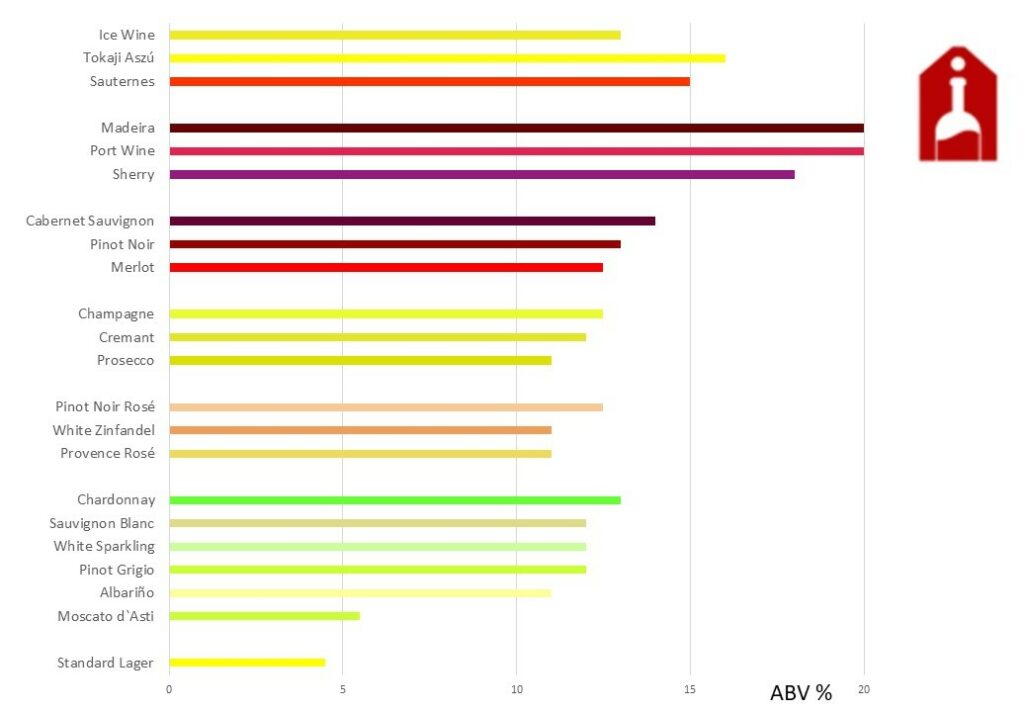
Sweetness levels
Wine sweetness is a spectrum, and most wines fall somewhere between very dry and very sweet. Pinot Noir wines with less than 3% residual sugar are considered dry. Off-dry, or semi-sweet wines, fall in the 3% to 5% residual sugar range. Anything above 5% residual sugar is considered distinctly sweet, and dessert wines typically sit between 7% and 9% residual sugar.
Fruity But Not Sweet
Pinot Noir, a popular red wine varietal, is considered a dry wine by nature. Although it may initially taste less dry compared to other reds like Cabernet Sauvignon or Tempranillo, Pinot Noir usually contains less than 3% residual sugar. This classification as a dry wine shouldn’t be confused with the wine’s overall flavor profile, which can range from light and fruity to more intense, depending on the region in which it was grown and the winemaking process used.

Another factor to consider when discussing wine flavors is the presence of tannins. Tannins are compounds found in grape skins, seeds, and stems; they contribute to the astringency and mouthfeel of the wine. Wines with higher tannin levels, such as Cabernet Sauvignon, often have a drier perception due to the sensation created on the palate.
In conclusion, the following summary can be made regarding wine sweetness levels:
- Less than 3% residual sugar: dry wines (e.g., Pinot Noir)
- 3% to 5% residual sugar: off-dry or semi-sweet wines
- Above 5% residual sugar: sweet wines, with dessert wines typically between 7% and 9% residual sugar
Understanding the differences between sweet wine and dry wines, as well as the role of tannins in wine perception, can greatly enhance a person’s appreciation and enjoyment of various wine styles.
Pinot Noir Flavor Profile
Aromas
The aromas of Pinot Noir wine can vary widely, but many of these wines exhibit fruity and floral notes. Some common aromas include cherry, raspberry, and strawberry. Pinot Noir may also display earthy and spicy scents, such as mushroom, cinnamon, and clove. Specific aromas can depend on the terroir and winemaking techniques used.
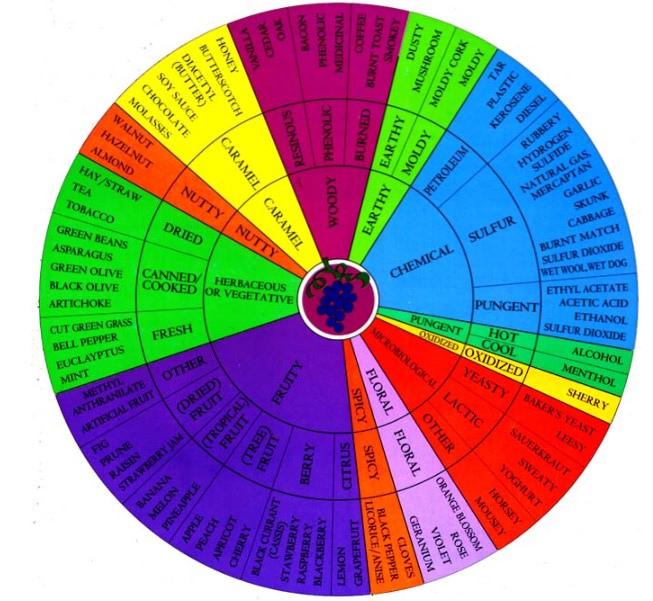
Flavors
Pinot Noir wine is typically characterized by its light to medium body and medium-dry taste. It is known for its red fruit flavors, such as cherry, raspberry, and strawberry. Darker fruit flavors, like black cherry and blackberry, can also be present in some variations. Earthy and spicy flavors, such as mushroom, pepper, and clove, are often detected in the wine’s profile. Other flavors, like cola and vanilla, can be attributed to specific winemaking techniques, like oak barrel aging.
Finish
The finish of a Pinot Noir wine is generally smooth and long-lasting. The acidity in the wine helps to create a clean and refreshing finish. This acidity also makes Pinot Noir a great pairing for many types of food, as it can help to balance out rich, fatty dishes. The wine’s low tannin levels contribute to its silky and approachable mouthfeel, making it a popular choice for both wine enthusiasts and casual drinkers alike.

Acidity and Tannins in Pinot Noir
Pinot Noir is a popular light-bodied red wine made from pinot noir grapes. This unique varietal Pinot Noir grapes are known for its combination of high acidity and low tannins, characteristics that greatly influence its flavor profile and structure.
The high acidity in Pinot Noir contributes to its bright, refreshing flavors that typically feature red fruit notes, such as cherry and raspberry. It helps to balance the overall taste and adds a certain crispness that makes the wine more appealing, especially when paired with food. The acidity levels in Pinot Noir generally fall in the medium-high range, making it an ideal choice for a wide range of palates.
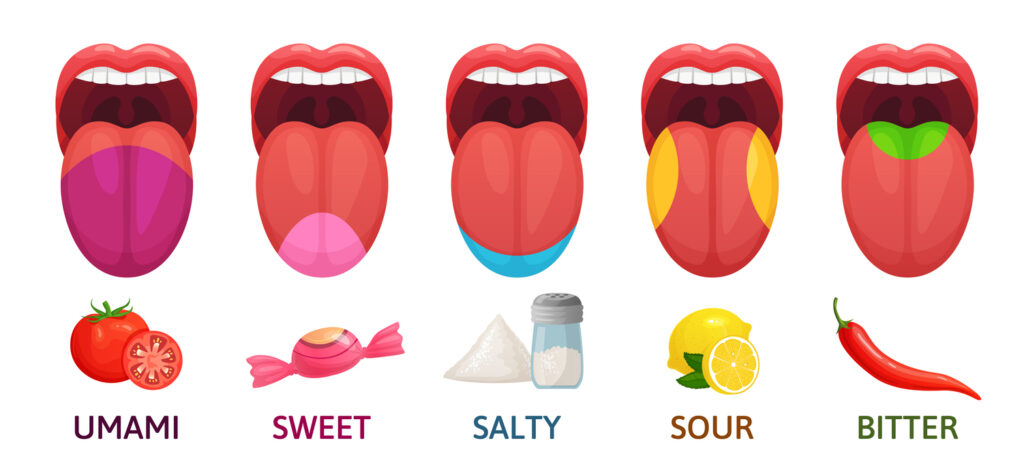
As for tannins, Pinot Noir is distinguished by its low tannin content. This attribute lends the wine a silky, smooth texture, which is a characteristic many wine enthusiasts appreciate. Lower tannins also allow for other flavors and aromas to shine through, such as mushroom or forest floor nuances, and even baking spices when aged in French oak barrels.
Some typical attributes of Pinot Noir include:
- Dry
- Light- to medium-bodied
- High acidity
- Low tannins
- Alcohol ranging from 12-15% ABV
While some serious wine lovers and drinkers might expect a sweeter taste from a red wine made from black grapes, Pinot Noir is almost always a dry wine. However, factors like ripeness of the Pinot Noir grapes at harvest and fermentation techniques can slightly alter the sweetness levels.
To create a more balanced taste, try pairing Pinot Noir with spicy dishes, like Indian or Thai cuisine, which can increase the perception of acidity and tannins, or with tart and acidic foods to make the wine appear sweeter.
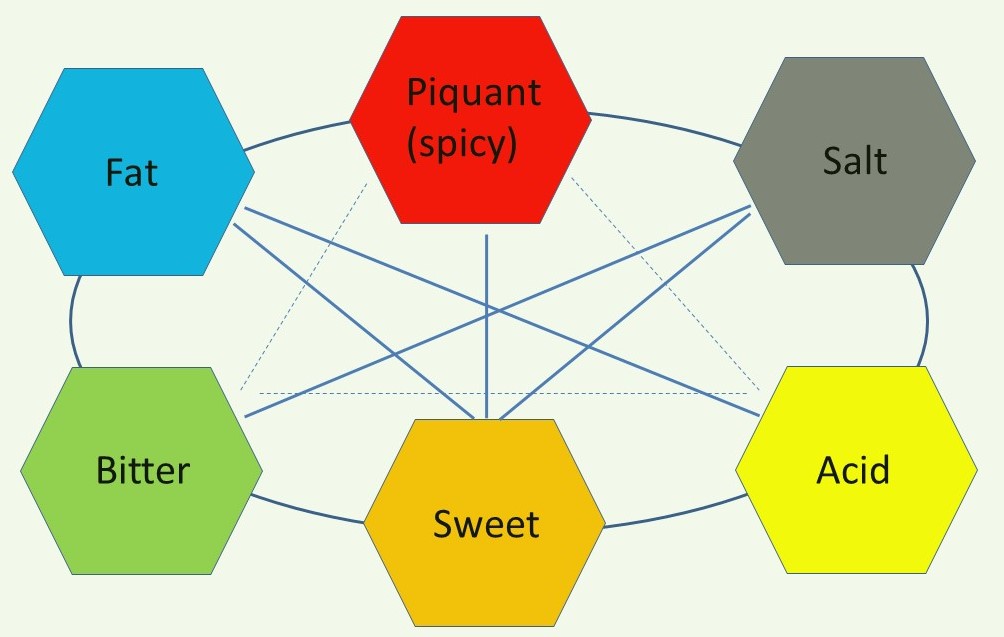
Pinot Noir Regions
Burgundy
Burgundy, located in France, is regarded as the birthplace of Pinot Noir. The region’s cool climate and calcareous soils create the ideal conditions for producing some of the world’s most renowned and age-worthy expressions of the Pinot Noir grape variety. The wines typically exhibit flavors of ripe red fruits with earthy undertones, often aged in French oak for added complexity.

California
California boasts several wine regions known for producing exceptional Pinot Noir. The Russian River Valley in Sonoma County, for example, has a cooler, maritime-influenced climate that allows for balanced fruit development of the Pinot Noir grapes. In contrast, the Central Coast’s Santa Barbara region offers a warmer Mediterranean climate that produces more fruit-forward, high-acidity Pinot Noir. Wines from these regions pair well with various foods, from seafood to poultry dishes.
Oregon
Oregon’s Willamette Valley is famous for its Pinot Noir, owing to its cool climate and rich, volcanic soils. This region in the United States mirrors Burgundy’s growing conditions, resulting in wines displaying bright acidity and a delicate balance of fruit and earthy flavors. Oregon Pinot Noir often sees a combination of French oak and stainless steel aging, contributing to a refined yet approachable character.

New Zealand
New Zealand’s South Island is home to several Pinot Noir-dominant wine regions. Central Otago, Marlborough, and Martinborough are particularly noteworthy, with diverse growing conditions giving rise to a range of Pinot Noir styles. These wines exhibit bright red fruit, savory notes, and lively acidity—hallmarks of New World Pinot Noir—while often display a subtle underlying influence of French oak.
Australia
While Australia may be better known for its cooler climates and its robust Cabernet and Shiraz, the country’s cooler regions have a growing reputation for producing stellar Pinot Noir. The Yarra Valley and Mornington Peninsula in Victoria are particularly noteworthy, with their cool maritime climate and varied topography, allowing for wines with intense fruit expressions, supple tannins, and bright acidity.

Central Europe
In Central Europe, Germany and Italy’s Alto Adige region are gaining recognition for their graceful, finely-structured Pinot Noir. German Spätburgunder is known for its earthy, plum-like flavors, while Italian Pinot Nero offers pronounced minerality alongside red fruit and floral notes. These cool-climate European wines showcase the exemplary versatility of Pinot Noir, suitable for a wide range of food pairings—from charcuterie to roasted meats.
Fermentation and Winemaking Process
Pinot Noir, a popular red wine, typically falls on the dry side of the sweetness spectrum. The basis for this lies in its fermentation and winemaking process, influenced by factors such as sugar content, yeast activity, and aging.
Fermenting the Pinot Noir Grapes
The fermentation process begins with fruit sugars found in grape juice, which are converted into alcohol by yeasts. In the case of Pinot Noir, winemakers aim to retain the wine’s natural fruity aromas while achieving a balanced, dry taste. This can involve using cultivated yeasts, a nutrient regimen, and lower fermentation temperatures (80-85ºF), with fewer cap manipulations. These measures ensure that the yeast is allowed to convert most, if not all, of the sugar into alcohol, thereby resulting in a drier wine.
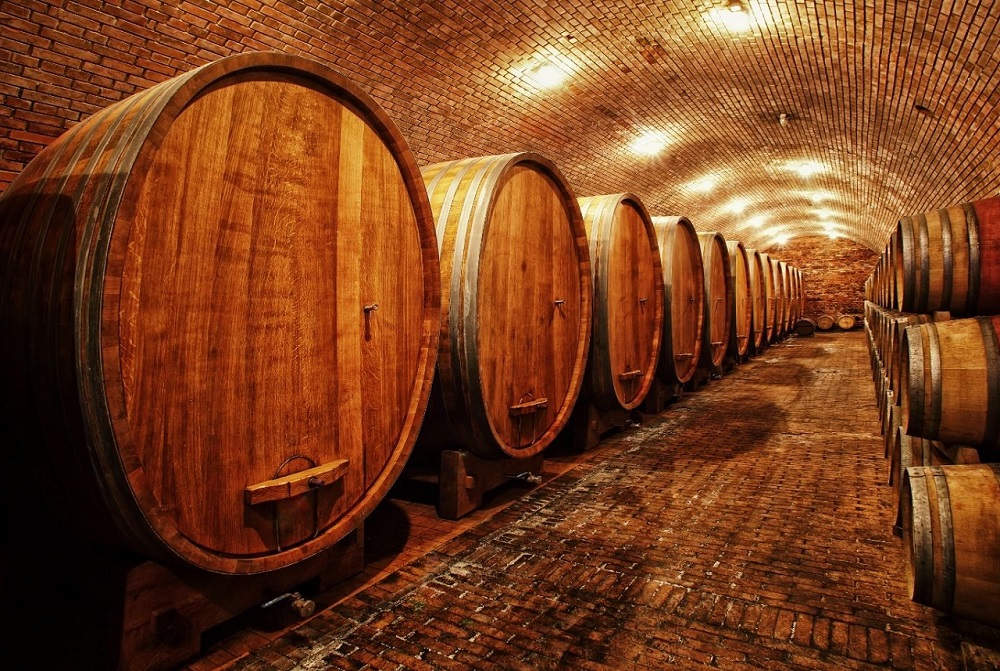
Pinot Noir Winemaking
In some instances, the winemaking process can include alterations to enhance sweetness in Pinot Noir. This can be achieved by destroying the yeast before it completes the sugar-to-alcohol conversion, leaving residual sugar in the wine. While this does not make the wine inherently sweet, it does lead to a perception of sweetness due to the presence of this residual sugar.
During the winemaking process, Pinot Noir may also undergo malolactic fermentation. This secondary fermentation allows for the conversion of malic acid into softer lactic acid, imparting a smoother, rounder mouthfeel to the wine that adds complexity to its taste. This step also contributes to Pinot Noir’s fruity profile, which may be mistaken for sweetness.
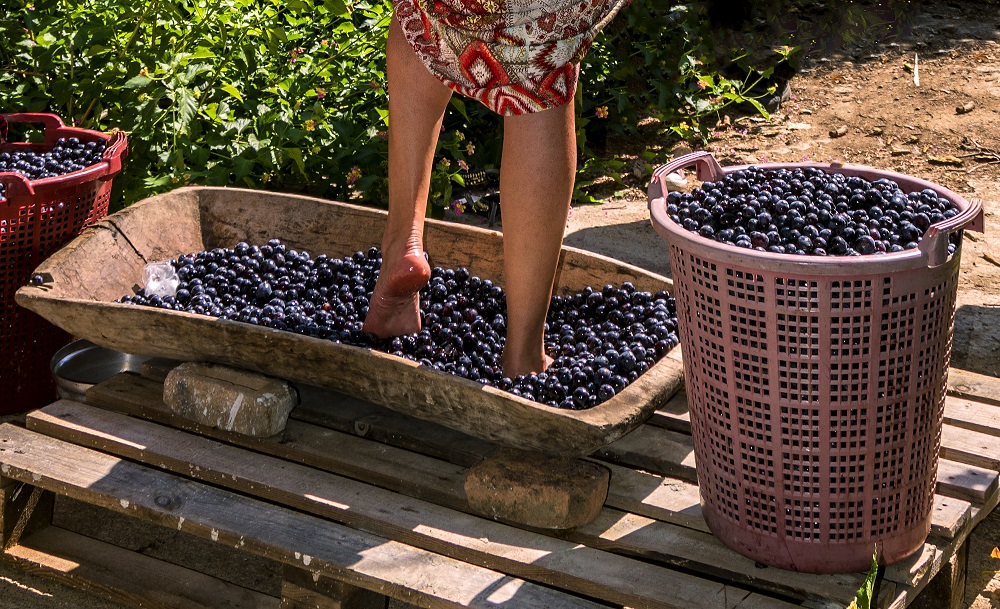
Finally, the aging process plays a role in shaping the final taste of Pinot Noir. Aging in oak barrels may enhance the wine’s flavors, with the oak imparting tannins and subtle notes of flavors such as vanilla, toast, and spices.
In summary, the fermentation and winemaking process of Pinot Noir often results in a dry, fruity wine. However, variations in the process can lead to a perception of sweetness for some Pinot Noirs.
Pairing Pinot Noir with Food
Pinot Noir, a dry red wine with a light to medium body and bright acidity, offers versatility when it comes to food pairings. Explore some fitting pinot noir taste options below, divided into three categories: poultry and meat, seafood, and vegetarian dishes.
Poultry and Meat
Pinot Noir pairs exceptionally well with tender meats, creating a delightful culinary experience. Some ideal poultry and meat pairings include:
- Chicken: Lightly seasoned and grilled, roasted, or baked chicken will complement Pinot Noir’s flavors without overpowering it.
- Duck: The rich flavors of duck can be a perfect match for the fruity and earthy notes of Pinot Noir. Consider a dish like duck confit or roasted duck breast with a cherry sauce to accentuate the pairing.
- Pork: Whether it’s a tenderloin, chop, or slow-cooked pulled pork, the succulent nature of pork dishes complements the wine’s silky tannins.

Seafood
Even though Pinot Noir is a red wine, its high acidity and low tannins make it suitable for pairing with seafood, especially those with a richer flavor profile. Suggestions include:
- Salmon: A popular pairing, the richness of salmon harmonizes with the bright acidity of Pinot Noir. Enjoy it grilled, pan-seared, or baked, with a simple seasoning to highlight the flavors.
Vegetarian Dishes
Pinot Noir can also enhance the flavors of many vegetarian dishes. The combination of its acidity and earthiness serves as an excellent match for the following:
- Mushrooms: Mushroom-based dishes, whether it’s a risotto, pasta, or a simple sauté, pair wonderfully with Pinot Noir, as the earthy flavors of the wine echo the mushrooms’ natural taste.
Remember to keep the seasoning and sauces in your dishes relatively mild to avoid overshadowing the Pinot Noir’s unique qualities.

Different Styles and Varieties of Pinot Noir
Pinot Noir, a popular red wine, is known for its versatility and diverse array of flavors. The grape is primarily used to produce light to medium-bodied wines, which can range from dry to slightly sweet. The wine styles are largely influenced by factors such as the winemaking process, climate, and regional characteristics.
Body of Pinot Noir
A key characteristic of Pinot Noir is its light to medium-bodied nature, which differentiates it from fuller-bodied red wines like Cabernet Sauvignon and Merlot. The light-bodied style emphasizes the fruit, floral, and spice flavors, particularly cherries, raspberries, and cloves. These flavors, combined with relatively low tannins and medium-high acidity, provide a balanced and smooth finish.

Is Pinot Noir dry or is Pinot Noir Sweet ?
We already confirmed that Pinot Noir wine is a dry wine but can you make it sweet?
In the winemaking process, decisions made by the winemaker can influence the sweetness or dryness of the final product. For example, if fermentation is interrupted before completion, there will be more residual sugar, resulting in a sweeter wine. Conversely, allowing fermentation to complete leads to a drier wine with lower sugar content.
Generally, Pinot Noir is considered a dry wine, but there may be some off-dry varieties with a slightly sweet profile. Barefoot Pinot Noir is an off-dry to sweet red Pinot Noir.
Pinot Noir Sparkling Wines
There are several distinct styles of Pinot Noir produced worldwide, one of which is the sparkling wine style. This style is prominent in the Champagne region of France, where it is typically blended with Chardonnay and Pinot Meunier to create the world-famous Champagne.

Other notable sparkling wines made from Pinot Noir are produced in northern California and Australia, offering a diverse range of flavors and characteristics.
How to serve Pinot Noir
Pinot Noir is a complex and delicate wine that requires special attention when serving. It’s important to handle your bottle of Pinot Noir with care in order to fully appreciate its flavor profile. Pinot Noir is known for its light body, fruity aroma, and smooth finish. Here are some tips on how to serve Pinot Noir like a pro.
Firstly, it’s important to serve your bottle of Pinot Noir at the right temperature. Ideally, it should be served between 55-65°F (13-18°C). This allows the wine to express its full range of aromas and flavors without being too cold or too warm. Secondly, always use the correct glassware when serving Pinot Noir. A tulip-shaped glass with a wide opening will allow the wine to breathe and give you enough space for swirling.

Nutrition and Health Facts
A glass of Pinot Noir typically has about 120 calories. 110 of these calories coming from alcohol and the remaining 10 from carbohydrates. The alcohol content of Pinot Noir usually ranges between 11-14%. This can vary depending on factors such as the region and winemaking process.
Best Pinot Noirs
The best Pinot Noirs can be found in the burgundy region where Pinot Noir thrives. In California the best Pinot Noirs can be found in the Willamette valley or in the Russian River Valley. These are wine growing areas with a climate suitable for producing high-quality wines.
The flavors of Pinot Noir can vary significantly due to terroir, which gives its distinctive character. Some common flavor notes include:
- Leather
- Smoke
- Dark fruits (e.g., blackberry or black cherry)
In summary, Pinot Noir is a dry wine with moderate calories and carbohydrates and alcohol content. Its flavors vary depending on the region and terroir.

